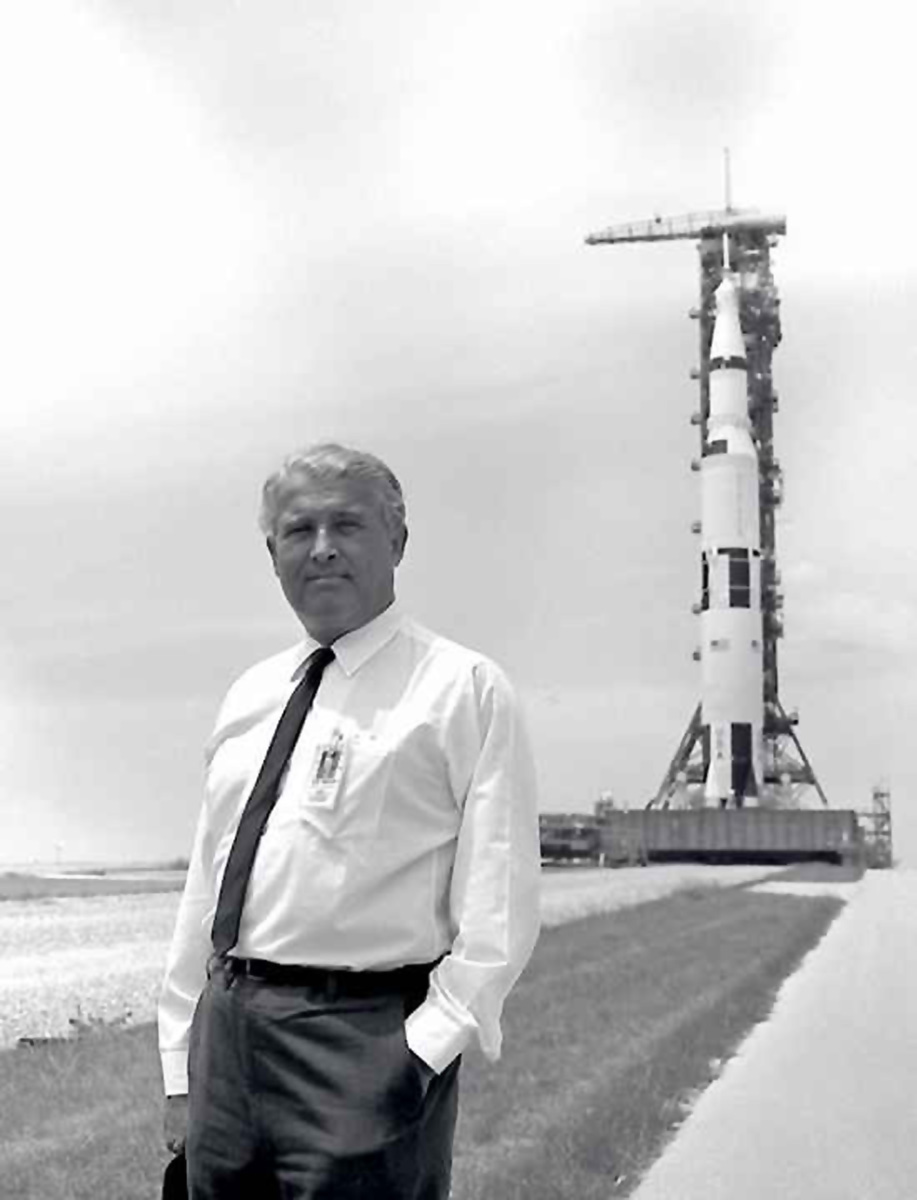Operation Paperclip
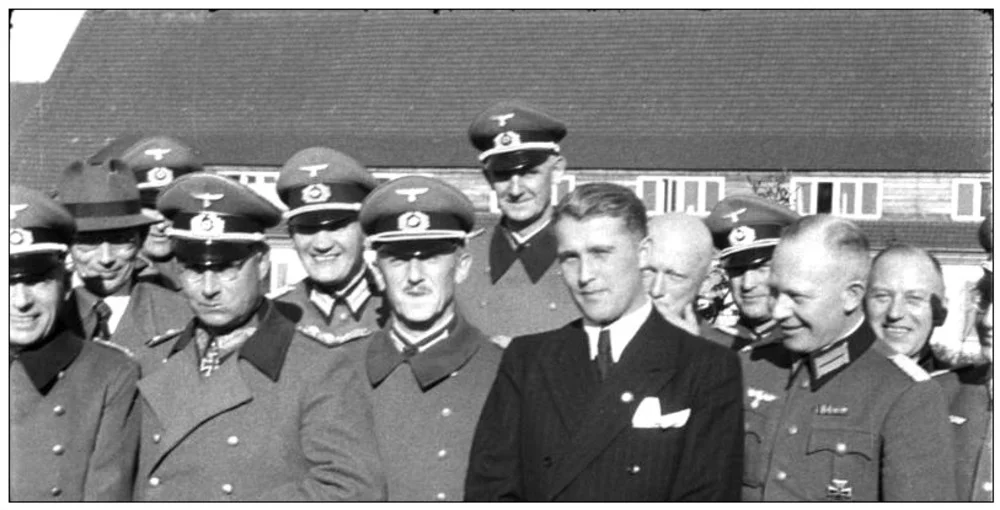
Operation Paperclip is a secret operation (program) of the US Office of Strategic Services to relocate scientists from Nazi Germany to work in the United States of America after World War II (1939-1945).
The operation was carried out by the Joint Intelligence Objectives Agency (JIOA ) and in the context of the flaring Soviet-American Cold War (1945-1991), one of the goals of the operation was to prevent the transfer of technological knowledge and advanced developments by German scientists to the Soviet Union and the UK.
Although the recruitment of German JIOA scientists began immediately after the end of the war in Europe, US President Harry Truman issued a formal order to start Operation Paperclip only in August 1945. Truman’s order specifically emphasized that the recruitment of those who ” was a member of the Nazi Party and was more than a formal participant in its activities or actively supported Nazi militarism ” was excluded. Under these restrictions, most JIOA-targeted scientists were to be declared unfit for recruitment, among them rocket scientists Wernher von Braun, Arthur Rudolph, and physicist Hubertus Strughold, each of which had previously been classified as a “security threat to Allied forces”.
To circumvent President Truman’s order and the Potsdam and Yalta Accords, the JIOA falsified the professional and political biographies of a number of German scientists and professionals whose knowledge and experience the US required. The JIOA also removed from the personal files of scientists indications of membership in the Nazi Party and involvement in the actions of the Nazi regime. “Whitened” from Nazism, the US government recognized scientists as trustworthy for work in the United States. The codename for the Paperclip project came from the paperclips used to attach the new political identities of “U.S. government scientists” to their personal JIOA files.
Ozenberg’s list
At the beginning of 1943, the German government began to recall many scientists, engineers and technicians from the troops; they returned to research work and development work to strengthen the German defense capability in the context of a protracted war with the USSR. The recall from the front line included 4,000 rocket men returned to Peenemünde, on the northeast coast of Germany:
In one night, doctors of science were released from labor service, masters were recalled from cleaning jobs, mathematicians were dragged out of bakeries, and precision mechanics were no longer truck drivers.
Dieter K. Hutzel, “From Peenemünde to Cape Canaveral”
In the course of recruiting intellectuals for scientific work, the Nazi government first requested the location and identification of scientists, engineers and technicians, and then assessed their political and ideological suitability. Werner Osenberg, an engineer-scientist who headed the “Association for Defense Research” (German: Wehrforschungsgemeinschaft), wrote down the names of politically reliable people in the Osenberg list, which became the basis for their restoration in scientific work.
In March 1945, at the University of Bonn, a Polish laboratory assistant found the pages of Osenberg’s list stuffed into a toilet bowl; the list fell into the hands of MI6, which passed it on to US intelligence. U.S. Major Robert B. Staver, Chief of the Rocket Weapons Section, Research and Intelligence Division, US Army Ordnance Corps, used Osenberg’s list to compile his list of German scientists who were to be detained and interrogated; Wernher von Braun, the chief rocket officer of the Nazis, headed Major Stiver’s list.
Identification
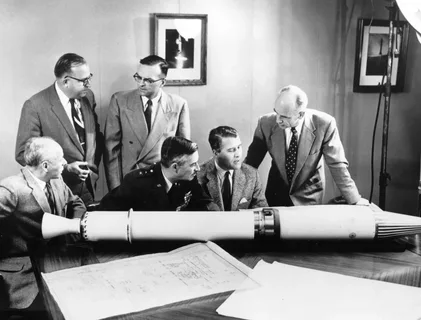 Operation “Overkast”. Major Staver’s original intention was only to interrogate the scientists, but what he learned changed the purpose of the operation. On May 22, 1945, he sent a telegram to the Pentagon to Colonel Joel Holmes urging the German scientists and their families to be evacuated, as they were “essential to success in the Pacific War “. Most of the engineers on Ozenberg’s list worked on the Baltic coast at the German Army research center Peenemünde, developing V-2 rockets ; after being captured, the Allies first settled them with their families in Landshut, in southern Bavaria.
Operation “Overkast”. Major Staver’s original intention was only to interrogate the scientists, but what he learned changed the purpose of the operation. On May 22, 1945, he sent a telegram to the Pentagon to Colonel Joel Holmes urging the German scientists and their families to be evacuated, as they were “essential to success in the Pacific War “. Most of the engineers on Ozenberg’s list worked on the Baltic coast at the German Army research center Peenemünde, developing V-2 rockets ; after being captured, the Allies first settled them with their families in Landshut, in southern Bavaria.
On July 19, 1945, the American Joint Chiefs of Staff (JCS), as part of a program called Operation Overcast, received the right to control the fate of German rocket engineers. In March 1946, in order to increase secrecy, the program was renamed Operation Paperclip (Eng. Operation Paperclip). Despite efforts to classify, a year later the press interviewed some of the scientists .
During Operation Alsos, Allied intelligence described nuclear physicist Werner Heisenberg, head of the German nuclear program on the eve of World War II, as “… more valuable to us than ten German divisions.” Along with rocket scientists and nuclear scientists, the Allies were looking for chemists, physicists and developers of naval weapons.
In the meantime, the technical director of the German Army Missile Center, Wernher von Braun, was being held in the US at the secret prison PO Box 1142 at Fort Hunt, Virginia. Since the existence of this prison was not made known to the International Red Cross, its operation was a violation by the United States of the Geneva Conventions. Although von Braun’s interrogators put pressure on him, he was not tortured.
Capture and imprisonment
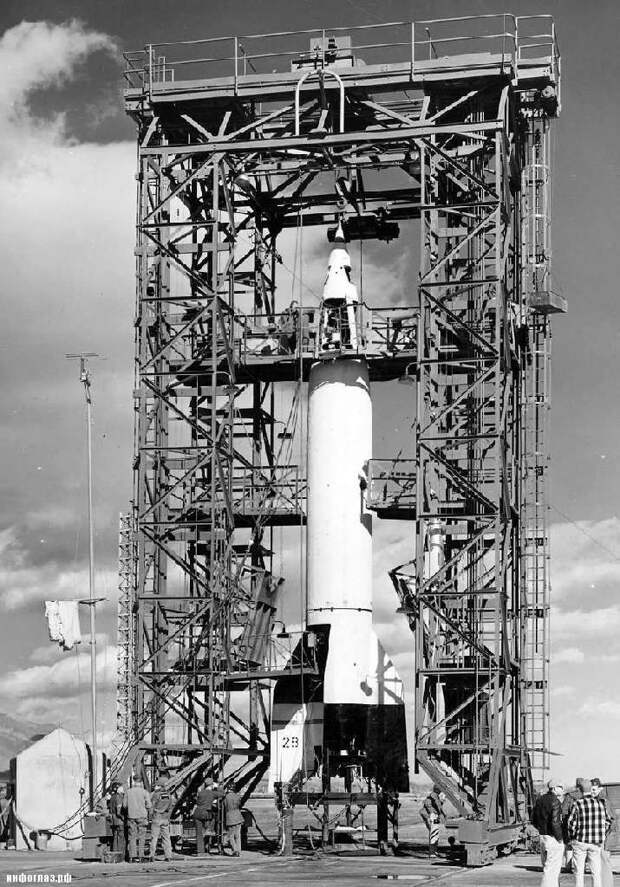 Earlier in the United States, a Joint Subcommittee on Intelligence Objectives (English Combined Intelligence Objectives Subcommittee, CIOS) was created. This organization provided information about T-Force ‘s targets, which included the technologies of scientific, military and industrial facilities (including their personnel). Priority was given to advanced technologies such as infrared, which could be used in the war with Japan ; finding technologies suitable for the war with Japan; and finally stop research. The research shutdown project was codenamed Project Safehaven.) and was not originally directed against the Soviet Union; rather, it was believed that German scientists could emigrate and continue their research in countries such as Spain, Argentina and Egypt, which were sympathetic to Nazi Germany.
Earlier in the United States, a Joint Subcommittee on Intelligence Objectives (English Combined Intelligence Objectives Subcommittee, CIOS) was created. This organization provided information about T-Force ‘s targets, which included the technologies of scientific, military and industrial facilities (including their personnel). Priority was given to advanced technologies such as infrared, which could be used in the war with Japan ; finding technologies suitable for the war with Japan; and finally stop research. The research shutdown project was codenamed Project Safehaven.) and was not originally directed against the Soviet Union; rather, it was believed that German scientists could emigrate and continue their research in countries such as Spain, Argentina and Egypt, which were sympathetic to Nazi Germany.
Most of the American efforts were focused on Saxony and Thuringia, which were supposed to enter the Soviet zone of occupation from July 1, 1945. Many of the German research centers, along with their personnel, were evacuated to these lands, in particular from the Berlin area. Fearing that the transfer to Soviet control might limit the Americans’ ability to use German scientific and technical expertise, and not wanting the Soviet Union to benefit from this experience, the US undertook an “evacuation operation” of scientific personnel from Saxony and Thuringia through such orders:
By order of the military government, you are obliged, together with your family and luggage, as much as you can carry, to report tomorrow at 13:00 (Friday, June 22, 1945) to the town square in Bitterfeld. You do not need to take winter clothes. You need to take light things, documents, jewelry and the like. You will be taken by car to the nearest railway station. From there, you will embark on a journey to the West. Please tell the person who delivered this letter how many people are in your family.
In 1947, this evacuation operation involved about 1,800 technicians and scientists, as well as 3,700 members of their families. These people, who had special knowledge or skills, were imprisoned in interrogation centers (one of them was the center with the code name “Dustbin” (English DUSTBIN), located first in Paris, and then transferred to Kransberg Castle near Frankfurt), where they detained and interrogated, in some cases for months.
Some scientists were recruited for Operation Overcast, and most were sent to villages where they had neither research equipment nor jobs; they were given a stipend and ordered to report to the police station twice a week so that they could not leave. The Joint Command’s Research and Training Directive stated that technicians and scientists would be released ” only after all the services concerned are satisfied with the intelligence information received from them.”
On November 5, 1947, the Office of the Military Government of the United States (OMGUS), which had jurisdiction over the western part of occupied Germany, held a conference that considered the status of evacuees, their monetary claims against the United States, and “possible violations by the United States of the laws of war and occupation rules. OMGUS Director of Intelligence R. L. Welsh initiated a program to resettle evacuees to Third World countries, called by the Germans the “jungle program” (German “Urwald-Programm”) of General Welch, but this program was not implemented. In 1948, the evacuees received 69.5 million Reichsmarks for resettlement.from the United States, which soon fell significantly due to the currency reform, during which the Deutsche Mark was put into circulation as the official currency of West Germany.
John Gimbel concludes that the US froze Germany’s best minds for three years, making post-war reconstruction difficult for Germany.
Scientists
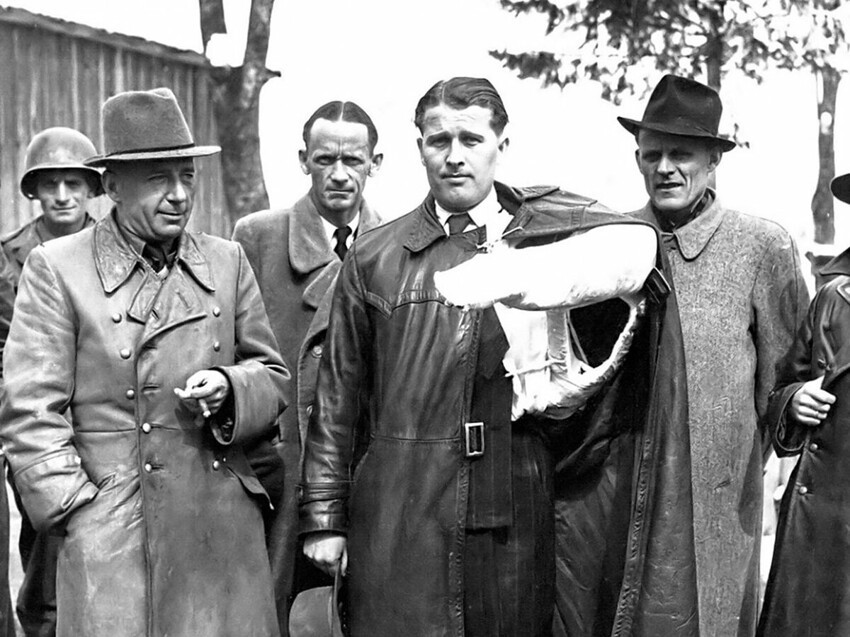 In May 1945, the US Navy received at its disposal Dr. Herbert Wagner, inventor of the Henschel Hs 293 rocket ; for two years he first worked at the Special Devices Center at Castle Gould and at Hempstead House, Long Island, New York; in 1947 he was transferred to Naval Air Station Point Mugu.
In May 1945, the US Navy received at its disposal Dr. Herbert Wagner, inventor of the Henschel Hs 293 rocket ; for two years he first worked at the Special Devices Center at Castle Gould and at Hempstead House, Long Island, New York; in 1947 he was transferred to Naval Air Station Point Mugu.
In August 1945, Colonel Holger Toftoy, head of the Rocket Division of the Research and Development Division of the US Army Ordnance Corps, first offered one-year contracts to the rocket scientists ; 127 of them accepted the offer. In September 1945, the first group of seven rocket scientists arrived at Fort Strong (Boston Harbor): Wernher von Braun, Erich W. Neubert, Theodor A. Poppel, August Schulze, Eberhard Rees, Wilhelm Jungert, and Walter Schwidetzky.
In late 1945, three groups of rocket men arrived in the United States to work at Fort Bliss, Texas and White Sands Proving Grounds, New Mexico, as “special employees of the War Department.”
In 1946, the United States Bureau of Mines employed seven German scientists in the development of synthetic fuels at the Fischer-Tropsch chemical plant in Louisiana, Missouri.
In early 1950, the right of legal residence in the United States for some of the Project Paperclip specialists was obtained through the American consulate in Ciudad Juarez, Mexico ; thus, Nazi scientists legally entered the US from Latin America.
86 aircraft engineers were transferred to Wright Field, where the US kept Luftwaffe aircraft and equipment captured during Operation Lusty (Luftwaffe S ecret Technolog y – Luftwaffe Secret Technology).
The US Army Signal Corps received 24 specialists – among them physicists Georg Goubau, Günter Guttwein, Georg Hass, Horst Kedesdy and Kurt Legowec ; physical chemists Rudolf Brill, Ernst Baars and Eberhard Both; geophysicist Dr. Helmut Weikmann; optician Gerhard Schwesinger; engineers Eduard Graeber, Richard Günther and Hans Ziegler.
In 1959, 94 people from Operation Paperclip arrived in the United States, among them Friedwardt Winterberg and Friedrich Wiegand. In total, during the Operation Paperclip until 1990, 1,600 people were imported into the United States, as part of the intellectual reparations of Germany to the United States and Great Britain, about 10 billion US dollars in patents and industrial technologies.
In the last decade, the activities during the war of some scientists who went through Operation Paperclip have been investigated. For example, the aviation medicine library at Brooks Air Force Base in San Antonio, Texas, was named in 1977 after Hubertus Strughold. However, it was renamed because documents from the Nuremberg Trials link Strughold to medical experiments in which Dachau prisoners were tortured and killed.
Arthur Rudolph was deported in 1984, although no charges were brought against him, and West Germany granted him their citizenship. Similarly, Georg Rickney, who arrived in the United States in Operation Paperclip in 1946, was returned to Germany in 1947 to face the Dora-Mittelbau war crimes tribunal, was acquitted and returned to the United States in 1948, later became a US citizen.
Key Figures
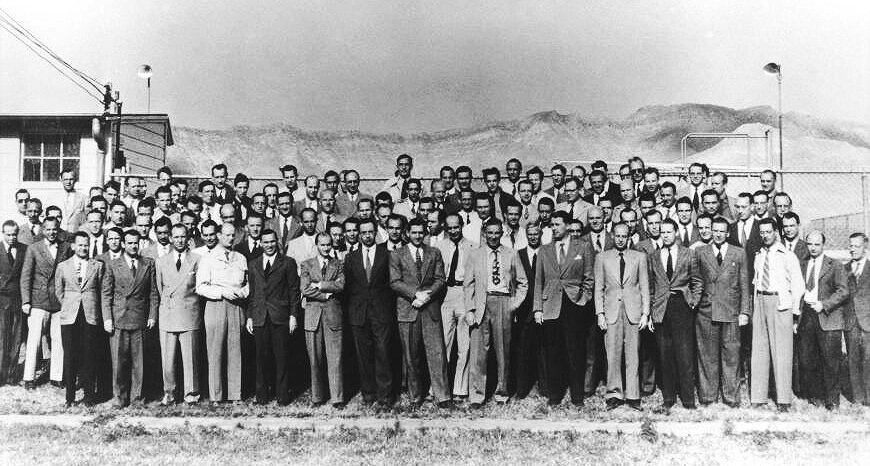
- Rocket science: Rudi Beichel, Magnus von Braun, Wernher von Braun, Walter Dornberger, Werner Dam, Konrad Dannenberg, Kurt H. Debus, Ernst R. G. Eckert, Krafft Arnold Ehricke, Otto Hirschler, Hermann H. Kurzweg, Fritz Müller, Gerhard Reisig, Georg Rickney, Arthur Rudolf, Ernst Stuhlinger, Werner Rosinski, Eberhard Rees, Ludwig Roth, Bernhard Tessmann, Oskar Holderer
- Aircraft : Alexander Martin Lippisch, Hans von Ohain, Hans Multhopp, Kurt Tank, Anton Flettner
- Medicine : Walter Schreiber, Kurt Blume, Hubertus Strughold, Hans Antmann (Human Factor)
- Electronics : Hans Ziegler, Kurt Lechovec, Hans Holmann, Johannes Pland, Heinz Schlicke
- Intelligence : Reinhard Gehlen
- Anti-aircraft artillery weapons, large-caliber weapons with a rotating block of barrels : Otto von Lossnitzer (former head of military production at the Reich Ministry of Armaments and a member of the board of directors at the Mauser company),
- Small arms : Karl Mayer


